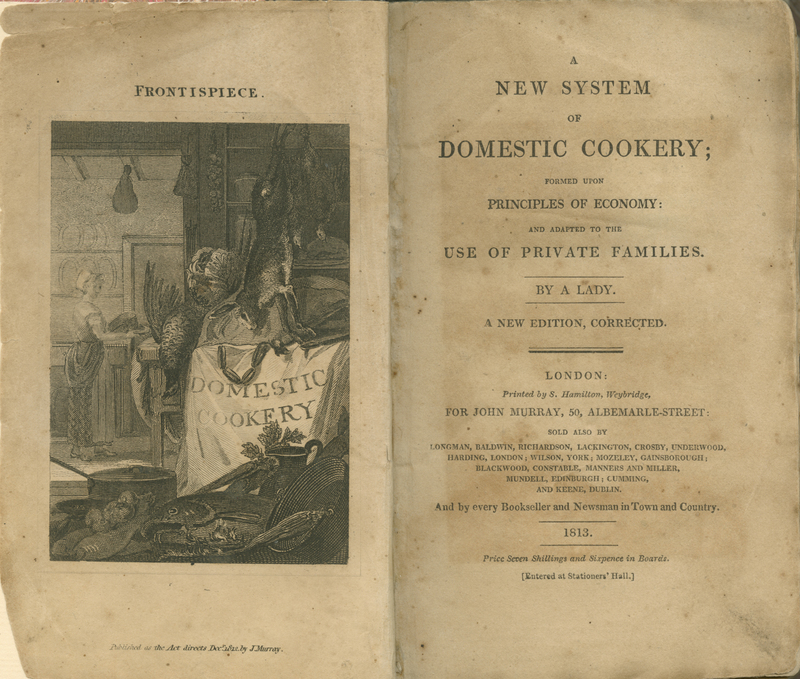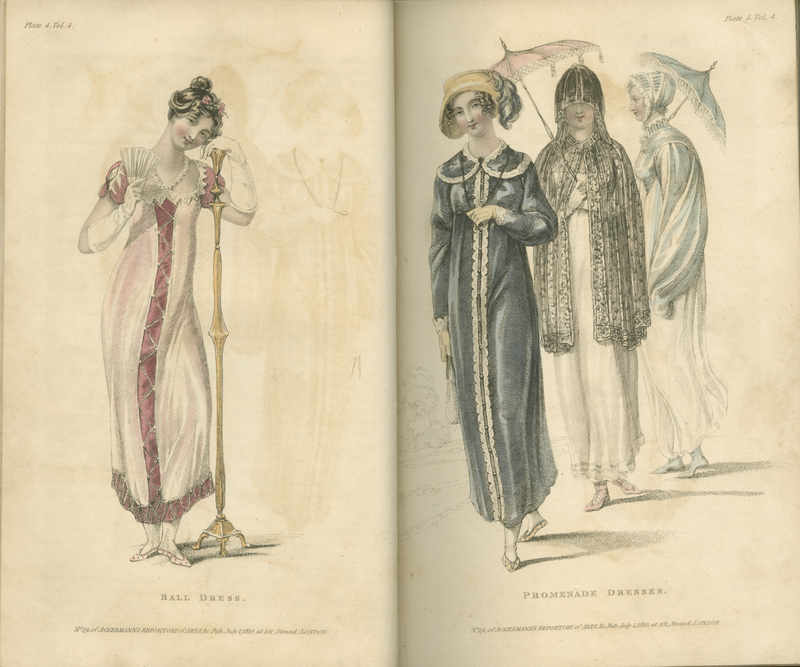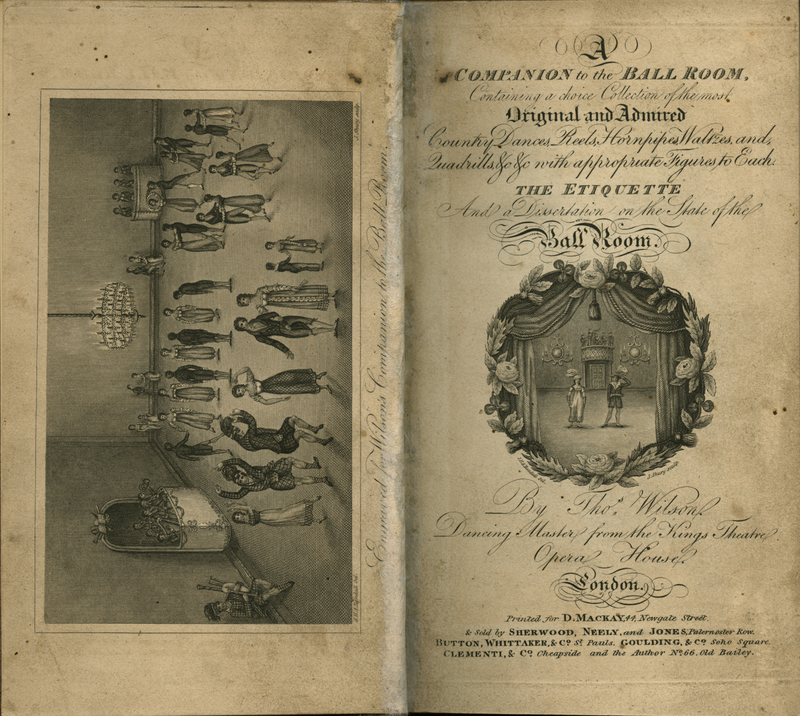Dancing and Fashion
This fashion plate of a ball dress comes from the July 1810 issue of Ackermann’s Repository. As was the convention at the time, dress illustrations in this magazine generally identify specific activities associated with particular outfits. In this case, we see a dress intended to be worn to a ball or formal dance and a trio of promenade dresses likely to be worn for an outing during the day. The description of the ball dress underscores the multiple stylistic influences and international commodities that infused British fashion of the time: “A pink gossamer satin slip, with Grecian frock of white Persian gause, or undrest Italian crape…Spanish slash sleeve….Hair à la Grecque…the pearls parted on the forehead by the introduction of a bunch of Persian roses….Gloves of French kid….Fan of white crape, with Egyptian characters in silver.”
In nineteenth-century Great Britain, balls were important events in the social calendar, bringing eligible young men and women together in a carefully constructed social setting. Dances appear in all of Austen’s novels and, as in the scene in Pride and Prejudice where Elizabeth Bennet and Mr. Darcy dance at the ball at Netherfield, are key moments for advancing the plot and exploring character.
Thomas Wilson was a prominent dancing master based in London, where he ran his own dancing academy, wrote multiple influential dance manuals, and trained dancers for the theater. His manuals describe the steps for popular dances both through text and illustration, often including appropriate music and an explanation of correct ballroom etiquette for men and women. A Companion to the Ball Room lays out in detail the etiquette of the ballroom, including the circumstances under which two ladies or gentlemen are permitted to dance with each other, what clothes are permissible, and what dance (the minuet) should start the ball.
The Complete System of English Country Dancing sets out the patterns for English country dancing, a genre of social dancing involving several couples in a series of varying patterns. In the introduction, Wilson bemoans the fact that English country dancing is widely practiced, but rarely done correctly. His book, and most especially its diagrams, is meant to systematize and correct any confusion about how the steps should properly be done. In this way, he hopes to “prevent those disputes, which so frequently occur in the Ball Room for the want of a proper authority as a means of reference.”

Domestic Arts



